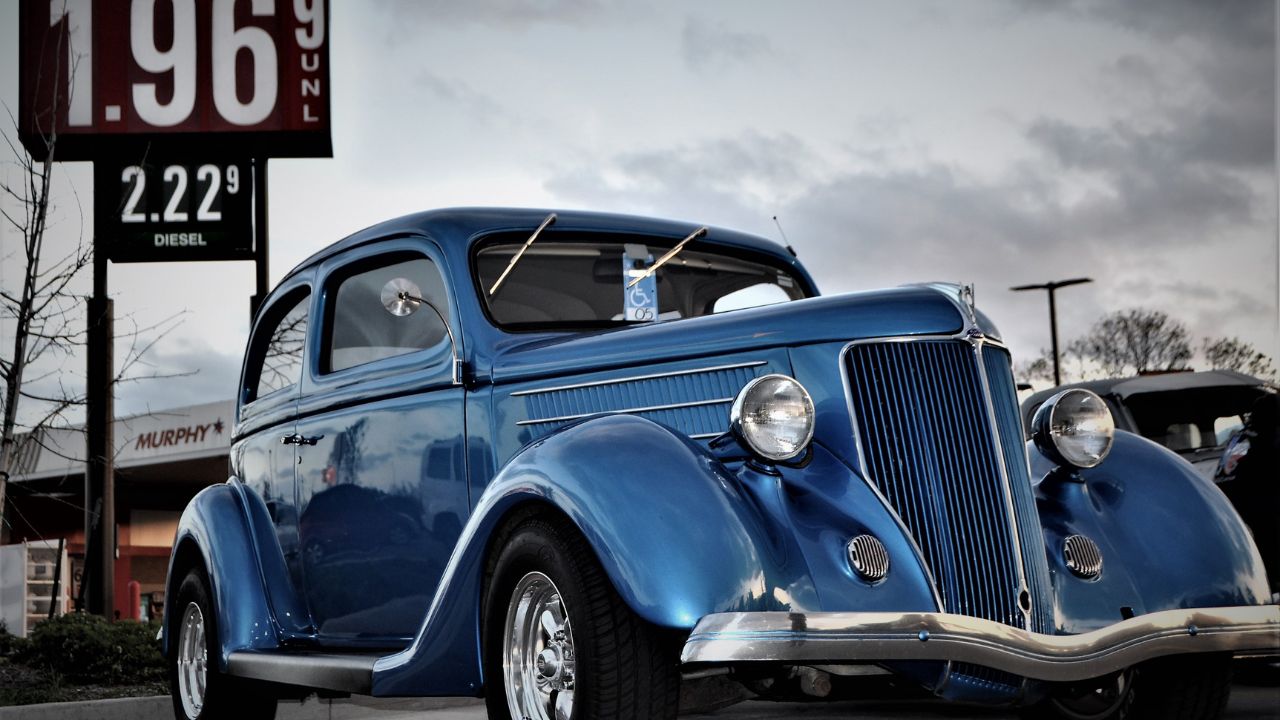
In the past decade, Dodge has released a variety of SRT-branded cars, including the Magnum SRT8, Viper, and Challenger SRT8. They all offer the same high-performance and luxury features. It is important to understand the differences between these cars if you want to purchase one. Read on to discover what you need to know about this vehicle. This article is for you if you enjoy Dodge vehicles.
Challenger SRT8
While the Dodge Challenger SRT8 may not be as fast as the Mustang GT GT it is the fastest muscle car the company makes and is also the most expensive. It's a fast car, but its exhaust note is not as unique as the Mustang's. The exhaust note of the SRT8 was too muted, especially in tunnels. It is still a fun car to drive and its extra weight makes it predictable on powerslides.

Dodge Challenger SRT10
The Chrysler Challenger SRT10 Concept was developed by the street technology and racing group at Chrysler. The five pillars of the program are bold design, race-inspired interior and world-class ride and handling throughout the dynamic range. Benchmark braking is also included. Along with a distinctive exterior design the Dodge Challenger SRT10 will offer a more powerful engine as well as a more agile driving position.
Dodge Viper
The next-gen Dodge Viper may come with an electric powertrain. It would provide instant torque and acceleration. Electric power is the future for high-performance cars starting with Tesla. The brand's first mover may be the new Viper. Here are some things you need to keep an eye on. Here is a preview of what you can expect to get from your car. It's time to make a move.
Dodge Magnum SRT8
Dodge Magnum SRT8 was a rear-wheel-drive sports car that was produced during a period when oil consumption wasn’t an issue. This vehicle's engine produces amazing horsepower, and its EPA rating is 15 mpg city and 24 mpg highway. However, it was not long before German automakers began dominating the rear-wheel drive market, and Chrysler-Dodge wanted to capitalize on the trend.
Dodge Neon SRT4
The Dodge Neon SRT-4 was a turbocharged sport compact car produced by the Dodge division from 2003 to 2005. PVO, DaimlerChrysler’s own tuner team tuned the engine. The group was officially renamed SRT 4 in 2004. The number of cylinders in SRT-4's engine is represented by the "4". It was comparable to a Ford Mustang GT turbocharged engine.

Dodge Challenger SRT Hellcat
The Dodge Challenger SRT Hellcat is a high-performance coupe that's still gaining in popularity. It is a top-speed machine, reaching 199 mph. You can also get it in special versions in Forza Motorsport 6 & Team Forza. Forza Horizon 3 offers the Hellcat with Drift Skills. The Hellcat also comes with a black body, aftermarket rims and a black paint. This car is capable of navigating on wide roads.
FAQ
How can I prepare to become a mechanic apprentice?
It is important that you understand the ramifications of your actions. It is important to know the basics of how cars work. This will help you to plan your first day in the garage.
You will also need to learn how to fix simple problems like tires and broken lights.
This article will show you how to diagnose and fix issues.
For the purpose of putting them back together again, you'll need to be able to identify how each piece fits together.
Finally, you need to be able to safely and efficiently use tools.
All of these factors will allow you to become a skilled mechanic.
Is it worthwhile to become a mechanic?
The answer to that question depends on what your life purpose is. If you're looking for money, then it's true. But, if there are meaning and purpose in your life, then it's not.
It's not worth learning mechanics if you don’t have the skills. You'll waste your time. It's not going to make you rich. It's unlikely that you will be famous. It's unlikely that it will change your life.
It would take you years to learn how to do everything correctly. Then you'd still have to pay someone else to fix your car when it breaks down. That's why most people don't bother doing it at all. They find something else to do.
Summarising, if your goal is to make lots of money, go for it. However, if you want to have a meaningful and fulfilling life, avoid the mechanic's trade.
What are the requirements of an automotive technician?
You need to have high school diploma or GED and good grades in English as well as maths. Additionally, you will need to be proficient in reading and writing. The written test will be passed and you will then have to take several practical exams before you can begin work.
How long is an automotive mechanic apprenticeship
An automotive mechanic apprenticeship takes around three years to complete. This includes two year at school as well as two years as an apprenticeship. The first year is used to learn all aspects of the trade including safety procedures and theory. This year, you will also learn how to safely and efficiently use tools. After the first year, a second year will be spent on-thejob training. This year you'll get experience in different trades. These periods will also give you the chance to take formal courses.
The final year of the program is spent gaining qualifications and becoming certified in the field. These include NVQs (National Vocational Qualifications), that are given after passing specific industry exams. Additionally, HNCs are Higher National Certificates that cover general subjects such management, customer service, and business administration. Finally, there are City & Guilds certificates that are offered for those who wish to become qualified in certain trades.
What is the difference?
Although they may be similar, they are not identical. Both a mechanic and an automotive technician can repair cars.
A mechanic must be skilled in manual dexterity and able to complete simple tasks quickly. They should be able to accurately diagnose problems and repair them efficiently.
An automotive technician needs to be more technically skilled than a mechanic. They must be able and able to read blueprints as well as use tools like drills or wrenches.
They must be able and competent to safely perform complicated procedures. They must also be familiarized in different types and electrical systems.
They must also be able comprehend how the various parts interrelate with one another.
A mechanic typically earns less than an automotive technician. But there are many opportunities for both jobs.
Statistics
- According to the BLS, total auto technician employment is expected to exceed 705,000 by 2030. (uti.edu)
- The U.S. Bureau of Labor Statistics (BLS) reports that the job outlook for automotive service technicians and mechanics is expected to decline by 4% from 2019 to 2029. (indeed.com)
- There were 749,900 jobs available for automotive service technicians and mechanics in 2016, which is expected to grow by six percent through 2026. (jobhero.com)
External Links
How To
How to diagnose your vehicle properly for repair
The symptoms of your vehicle are the first thing you need to look at in order to determine whether it is in dire need of repairs. Then, follow these steps to diagnose your vehicle properly.
-
Check engine lights. Inspect the dashboard light indicators. These include the engine lights, the oil pressure gauge and the battery light indicators. The RPM gauge and coolant temperature gauge should also be checked. It could indicate that your vehicle is having problems.
-
Check the treads of your tires. Tires with worn treads could cause problems when handling or braking. You should also inspect the wheel treads. They should look clean and be smooth. To do this, remove the wheels and take them out. Use a flashlight to see how well the treads are worn.
-
You should always monitor the level brake fluid. You should always keep track of the amount of brake fluid in your vehicle. You can ensure that your brakes are working properly by monitoring the level of brake fluid in your vehicle. Low brake fluid levels could cause your brakes to fail when you apply pressure.
-
You should test the suspension system. It is common for vehicles to have a suspension system which absorbs shocks or vibrations. It improves control and allows for smoother accelerations or decelerations. If your vehicle has a suspension problem, it might feel wobbly or shake uncontrollably. If you are unsure if your vehicle is suffering from a suspension problem, put weight on the front and rear axles to check the movement.
-
Take a look at the steering column. The steering column is used to link the steering wheel with the rest of vehicle's components. The steering column can often be damaged by an accident. You should replace the steering column if it is loose or weak.
-
Pay attention to the exhaust pipe. The exhaust pipes are responsible for moving gases from the combustion chamber into the atmosphere. You can let harmful fumes into your home if your exhaust pipes crack or leak. It is also important to repair any bends in your tailpipe immediately.
-
Look under your hood. Take a look underneath the hood to find any strange or unusual items. Your engine could be leaking fluids. In addition, if you notice an unusual smell coming from your engine compartment, you should contact a professional technician.
-
Check the air filter. The outside environment collects dust and other particles in the vehicle's filter. Dirty air filters can cause your vehicle to run poorly. Replace your air filter regularly.
-
Make sure you check the fan belt. Your vehicle's fan belt connects the engine to the transmission. The engine will not turn if the fan belt breaks. It is easy to replace the belt. You only need a screwdriver or pliers to replace your belt.
-
Check the radiator hose and hoses. The radiator-hose carries water to the engine. It can cause hot liquid to leak onto the engine if it is damaged or cracked. Repairing the hose is easy with a pair of needlenose pliers or a small wire brush.
-
You should inspect the windshield wipers. Windshield wipers work by using electricity to remove rain and snow. If they stop working, streaks could be left on your glass. You can fix the problem by changing the washer fluid.
-
Make sure you check the cables. Your car's electrical system is powered by batteries. Make sure you disconnect the negative cable before replacing batteries. Failure to do so can damage your alternator.
-
Check the headlights. Headlights are used to illuminate the road ahead. They can make it difficult to see if they stop working. You can check the bulbs to make sure they aren't burned out.
-
Check the lights. The lights are there to warn other drivers if they approach you at night. If one doesn't work, it could distract you and lead to an accident.
-
You should inspect your brakes. Brakes will reduce the speed of your car in case of an accident. If your brakes aren't working properly, you may lose control and crash into other cars.
-
Change the oil. Your engine will stay lubricated by the oil. It helps prevent metal parts from wearing out too quickly. It is recommended that the oil be changed every other month.